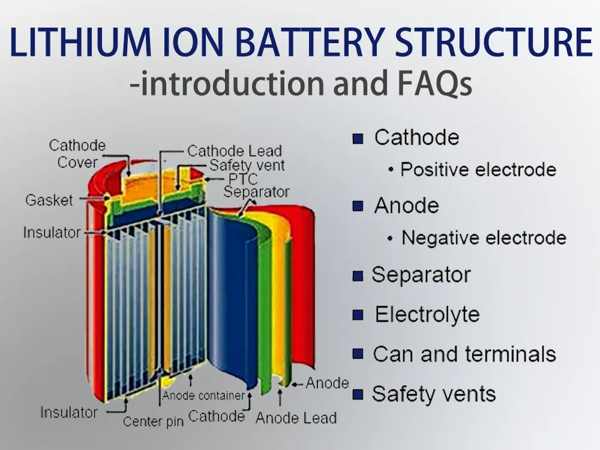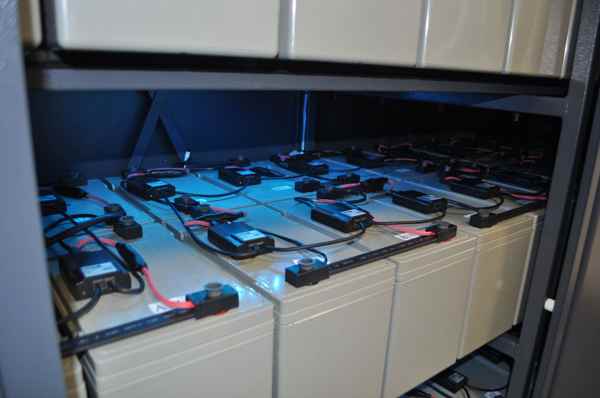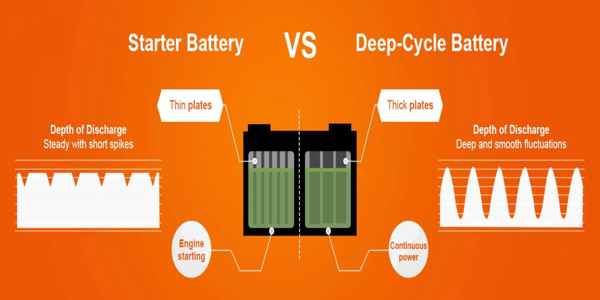Quale batteria può essere montata su un lato?
Quando stai progettando un sistema di stoccaggio energetico per la tua casa o il tuo business, Lo spazio è spesso una preoccupazione primaria. Potresti chiederti, "Devo sacrificare lo spazio prezioso per una batteria voluminosa, oppure le batterie possono essere montate in diverse posizioni, come dalla loro parte o verticalmente su un muro?" La risposta dipende interamente dalla tecnologia della batteria, e le soluzioni moderne offrono un'incredibile flessibilità.
La grande notizia è che le batterie sigillate più moderne possono essere montate in modo sicuro in qualsiasi posizione. Ciò include tipi di acido di piombo sigillato come AGM e gel, e soprattutto batterie agli ioni di litio. Questa versatilità è una caratteristica chiave degli eleganti sistemi di batterie montati a parete popolari oggi. L'unico tipo che non puoi assolutamente montare su un lato è una tradizionale batteria al piombo-acido allagato, come il suo elettrolita liquido si riverserebbe.

A Gycx solare, Una parte fondamentale del nostro processo di progettazione è la creazione di sistemi non solo potenti ma anche integrarsi perfettamente ed efficiente negli spazi dei nostri clienti. La capacità delle moderne batterie al litio di essere montate su pareti ne è un perfetto esempio. Esploriamo le tue domande sul montaggio e altre migliori pratiche della batteria.
Va bene posare una batteria al litio su un lato?
Stai prendendo in considerazione una batteria di litio potente ed efficiente per le tue esigenze energetiche e vuoi installarla in un modo che si adatta meglio al tuo spazio. COSÌ, È davvero sicuro posare una batteria al litio su un lato o montarla verticalmente?
sì, È perfettamente ok posare una batteria agli ioni di litio sigillata su un lato o montare in qualsiasi orientamento. La stragrande maggioranza delle batterie al litio utilizzate per l'accumulo di energia, in particolare il fosfato di ferro al litio (LFP) chimica trovata in sistemi di alta qualità, Usa un elettrolita immobilizzato (o una sostanza o materiali a forma di gel tenuto in sacca o cellule prismatiche). Non esiste un liquido a flusso libero all'interno che potrebbe perdere o fuoriuscire. Questo è esattamente il motivo per cui moderno Batteria montata a parete I prodotti sono progettati per essere installati verticalmente contro un muro, Risparmio enormi quantità di spazio sul pavimento.

Immergersi più in profondità: Il vantaggio di un design a prova di fuoriuscita
La possibilità di montare una batteria al litio in qualsiasi posizione è un vantaggio significativo rispetto alle vecchie tecnologie della batteria.
- La scienza dentro: A differenza di una batteria per auto tradizionale o della batteria a ciclo profondo allagato che contiene acido solforico liquido che si tiene attorno a piastre di piombo, Un pacco batteria agli ioni di litio sigillato contiene celle in cui l'elettrolita è un polimero, vieni a, o è completamente assorbito in un materiale separatore. Tutti i componenti interni sono fissati in modo sicuro.
- Ingegneria per flessibilità: I produttori progettano questi pacchi per batterie per essere robusti. Le celle interne sono ben confezionate e fissate all'interno di un involucro durevole. Ciò significa che la gravità non ha alcun effetto negativo sulle loro prestazioni o sicurezza, Indipendentemente dal loro orientamento.
- L'esempio finale: Batterie montate a parete: Prodotti come Tesla Powerwall, Infase, e i vari bess montati su pareti LFP (Sistema di accumulo dell'energia della batteria) soluzioni che le offerte solari Gycx sono l'espressione definitiva di questo vantaggio. Il loro intero design, dalla struttura interna alle staffe di montaggio esterne, è ottimizzato per un sicuro, verticale, Installazione montata a parete.
- L'unica eccezione: Acido di piombo allagato: Vale la pena ripetere che questa flessibilità fa non Applicare alle tradizionali batterie al piombo-acido allagato. Questi devono Sempre essere tenuto in posizione verticale per impedire all'acido liquido altamente corrosivo di fuoriuscire, che causerebbe gravi danni e creerebbe un grave pericolo per la sicurezza.
Questa crescente libertà ci dà, come installatori, Un'enorme flessibilità di progettare un sistema che non è solo potente ma anche esteticamente piacevole ed efficiente in termini di spazio per la tua casa o il tuo business.
Le batterie agli ioni di litio devono essere in posizione verticale?
Affrontiamo questa domanda comune frontalmente. Molti di noi sono cresciuti con la regola secondo cui tutte le batterie devono essere mantenute in posizione verticale. Questa vecchia regola si applica alle batterie agli ioni di litio avanzate che alimentano tutto, dai nostri telefoni alle nostre case oggi?
NO, Le moderne batterie agli ioni di litio non devono essere mantenute in posizione verticale. Come abbiamo discusso, La loro costruzione interna solida o simile a un gel li rende a prova di fuoriuscita e indipendenti dalla posizione. Questa libertà dai vincoli di orientamento è un grande vantaggio tecnologico rispetto ai loro predecessori di piombo-acido allagati ed è un fattore chiave per progetti di prodotti innovativi come Compact, Batteria montata a parete sistemi.

Immergersi più in profondità: Liberarsi dalle vecchie regole della batteria
Il "deve essere in posizione verticale" La regola è una sospensione dalla vecchia tecnologia della batteria. Ecco un modo utile per pensare alla differenza:
- Le batterie al piombo-acido allagate sono come una tazza d'acqua aperta: Se lo ribalta, Il liquido si riversa. Le piastre di piombo interne devono essere costantemente immerse nell'elettrolita liquido per funzionare, E la parte superiore deve essere aperta (con tappi di sfiato) per consentire ai gas di fuggire durante la carica.
- Le batterie a ioni di litio sigillate sono come una sigillata, bottiglia d'acqua moderna: Puoi capovolgerlo o lateralmente, e niente perde. I componenti di archiviazione energetica sono autonomi e non si affidano a un liquido a flusso libero.
Mentre è sicuro montarli in qualsiasi orientamento, Controlla sempre il manuale di installazione del produttore. In alcuni rari casi, Un produttore potrebbe raccomandare un "preferito" Orientamento per una dissipazione di calore ottimale tramite pinne di raffreddamento o prese d'aria progettate nell'involucro. Tuttavia, Per la maggior parte delle batterie al litio sigillate di alta qualità, Qualsiasi orientamento è accettabile. Questa versatilità è ciò che ci consente al solare Gycx per progettare sistemi incredibilmente puliti e integrati, Reclamare lo spazio prezioso per i nostri clienti utilizzando eleganti soluzioni per batterie montate a parete o montate su rack.
Cosa non fare con una batteria a ciclo profondo?
Hai investito in una batteria a ciclo profondo, che è progettato per fornire energia costante per un lungo periodo. Per proteggere quell'investimento e ottenere la durata massima, È fondamentale sapere quali errori comuni evitare.
Ci sono diverse cose chiave che dovresti non fare con qualsiasi batteria a ciclo profondo, Che si tratti di litio o acido di piombo. Non lasciarlo mai riposare per lunghi periodi quando è completamente dimesso, Poiché ciò può causare danni irreversibili. Non utilizzare mai un caricabatterie errato o incompatibile, poiché il sovraccarico può distruggere la batteria. Non esporlo mai a calore estremo, che accelera l'invecchiamento. E per i tipi di piombo-acido allagati specificamente, Non trascurare mai il controllo dei livelli dell'acqua.

Immergersi più in profondità: Una lista di controllo per la cura della batteria
Ecco i "non fare da non fare" per garantire una vita lunga e sana per la tua batteria a ciclo profondo:
- Non lasciarlo morto: Questo è un killer della batteria. Per le batterie al piombo, Lasciarli in uno stato dimesso provoca formazione di cristalli di solfato duro sulle piastre (solfatazione), che soffoca la capacità della batteria di accettare una carica. Per le batterie al litio, Lo scarico a una vera tensione zero può causare danni interni. Ricaricare sempre la batteria il prima possibile dopo una scarica profonda.
- Non usare il caricatore sbagliato: Ciò è particolarmente critico per batterie sigillate come gel e litio. Ogni chimica della batteria ha una tensione specifica e un profilo corrente di cui ha bisogno per una ricarica sicura ed efficace. L'uso di un caricabatterie progettato per una batteria per auto standard su una batteria LFP o gel di cicli profondi è una ricetta per il disastro. A Gycx Solar, Garantiamo che il controller di carica solare sia perfettamente programmato per la tecnologia della batteria specifica che installiamo.
- Non ignorare la temperatura: Il calore è il singolo più grande nemico della durata della batteria. Per ogni aumento di 10 ° C della temperatura operativa media superiore a 25 ° C (77° f), La vita di una batteria può essere tagliata a metà. Ciò è particolarmente importante nei caldi, Clima umido di Singapore. Installa le tue batterie nel più cool, Posizione più ben ventilata possibile, e fuori dalla luce solare diretta.
- Non drenarlo costantemente per svuotare (se evitabile): Mentre sono "cicli profondi," Tutte le batterie durano più a lungo se sono soggette a cicli più bassi. Se usi regolarmente solo 50% della capacità della tua batteria anziché 90%, Otterrai significativamente più cicli di carica nel corso della sua vita. Il adeguato dimensionamento del sistema aiuta a evitare questo stress.
- Non mescolare batterie vecchie e nuove: Quando si costruisce un banco della batteria, Non mescolare mai batterie di età diverse, capacità, o tipi nella stessa stringa. Le batterie più deboli trascineranno giù quelle più forti, portando a un sistema sbilanciato e poco performante che fallisce prematuramente.
- Non trascurare la manutenzione (per acido di piombo allagato): Se opti per il costo iniziale inferiore delle batterie FLA, Devi impegnarti a controllare e ricaricare regolarmente i livelli di elettroliti con acqua distillata. Dimenticare questo è il motivo più comune che falliscono. Questa è un'area chiave in cui litio sigillato, gel, o le batterie AGM offrono un enorme vantaggio.
Qual è un aspetto negativo dell'utilizzo di batterie a ciclo profondo?
Le batterie a ciclo profondo sono i cavalli di lavoro di accumulo di energia, progettato per essere dimesso e ricaricato ripetutamente. Ma quali sono i compromessi intrinseci o gli svantaggi di cui dovresti essere consapevole quando ne scegliete uno?
Un aspetto negativo di molte batterie a ciclo profondo tradizionali, particolarmente Tipi di acido piombo (Inondati, AGM, Gel), è il loro durata del ciclo limitato Rispetto alle moderne opzioni di litio. Sono anche molto pesante e ingombrante per la quantità di energia che immagazzinano (bassa densità di energia), E hanno Bassa efficienza di andata e ritorno, Significa che viene sprecata più energia durante la ricarica e lo scarico.

Immergersi più in profondità: I compromessi della tecnologia del ciclo profondo
Diamo un'occhiata ai lati negativi, Soprattutto quando si confrontano le tradizionali batterie a ciclo di piombo-acido con soluzioni di litio moderne come quelle Solar Gycx in cui è specializzato:
- Durata del ciclo limitato: Una batteria a piombo-acido del ciclo profondo potrebbe essere valutata per 300-1,000 cicli. Un fosfato di ferro al litio di alta qualità (LFP) batteria a ciclo profondo, Al contrario, è in genere valutato per 3,000 A 6,000+ cicli. Per un sistema solare che si cicla ogni giorno, Questa è la differenza tra sostituire le batterie ogni 3-5 anni contro averli duri 10-20 anni.
- Peso e dimensioni (Bassa densità di energia): Il piombo-acido è incredibilmente pesante. Un banco di batterie al piombo-acido che fornisce 10 kWh di energia utilizzabile potrebbe pesare diverse centinaia di chilogrammi. Un moderno sistema di litio LFP, come un Batteria montata a parete, fornire la stessa energia sarebbe significativamente più leggero e più compatto.
- Capacità utilizzabile inferiore (Profondità di scarico - DoD): Per preservare la vita di una batteria al piombo-acido, Si consiglia generalmente di non scaricarlo più di 50%. Ciò significa che una batteria al piombo-acido da 10kWh fornisce solo 5kWh di energia utilizzabile. Una batteria al litio LFP può essere in genere scaricata 90-100%, Quindi una batteria LFP da 10kWh fornisce 9-10kWh di energia utilizzabile. È necessario acquistare una banca di piombo-acido molto più grande per ottenere la stessa energia utilizzabile di un litio più piccolo.
- Bassa efficienza: L'efficienza di andata e ritorno delle batterie al piombo-acido è in giro 80-85%. Questo significa per ogni 100 watt di energia solare che metti, Ottieni solo 80-85 Watts di nuovo. Le batterie LFP sono molto più efficienti, intorno 95% o meglio.
- Requisiti di manutenzione (per acido di piombo allagato): Come discusso, Le batterie FLA richiedono regolari, manutenzione pratica, che è un aspetto negativo operativo significativo.
Gycx Solar Story: "Spesso abbiamo clienti che chiedono se possono risparmiare denaro utilizzando le tradizionali batterie a ciclo profondo. Mostriamo loro la matematica a lungo termine: mentre il nostro costo iniziale LFP1. I sistemi montati a parete sono più alti, Non devi sostituirli 2 O 3 volte nello stesso periodo, E ottieni più energia e efficienza utilizzabili ogni singolo giorno. Il valore a vita è quasi sempre di gran lunga superiore."
La capacità di montare le moderne batterie al litio in qualsiasi posizione è un potente vantaggio, Abilitare il pulito, Disegni di risparmio spaziale dei sistemi di accumulo di energia montati a parete di oggi. Comprendendo le migliori pratiche per le loro cure e riconoscendo i compromessi rispetto alle vecchie tecnologie di ciclo profondo, Puoi prendere una decisione veramente informata.
A Gycx Solar, La nostra esperienza risiede nella progettazione di sistemi che sfruttano i punti di forza della migliore tecnologia disponibile. Se hai domande sulle nostre soluzioni per batterie montate a parete o altre opzioni di accumulo di energia, Ti invitiamo a contattarci per una consulenza professionale.
Comprendere il concetto di LFP ti aiuterà a confrontare meglio e comprendere i concetti di dati relativi alla batteria. Questo ti aiuterà a selezionare il prodotto che si adatta meglio alle tue esigenze dalla nostra azienda. ↩
